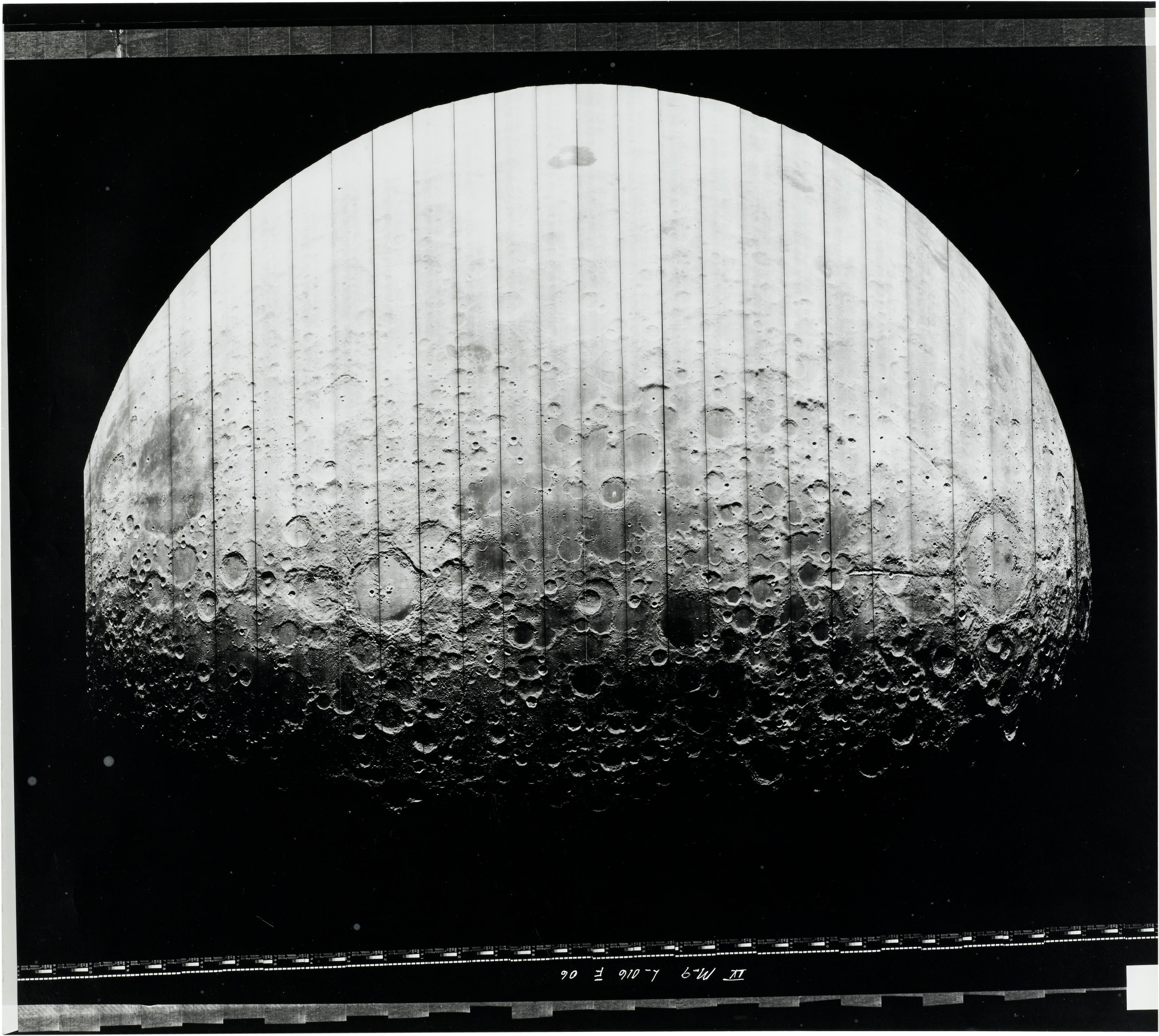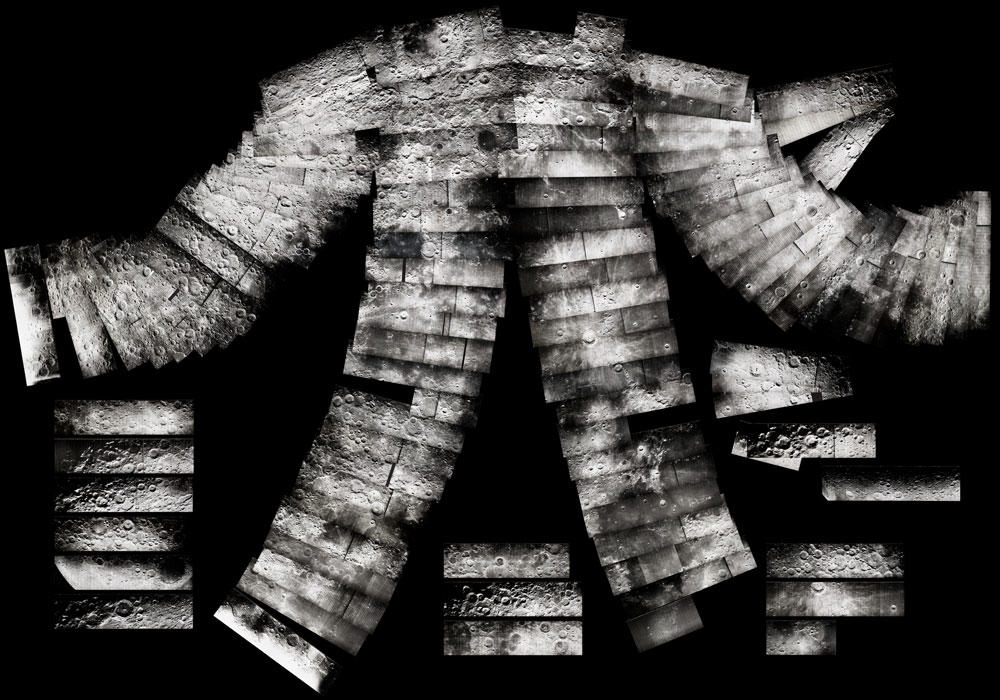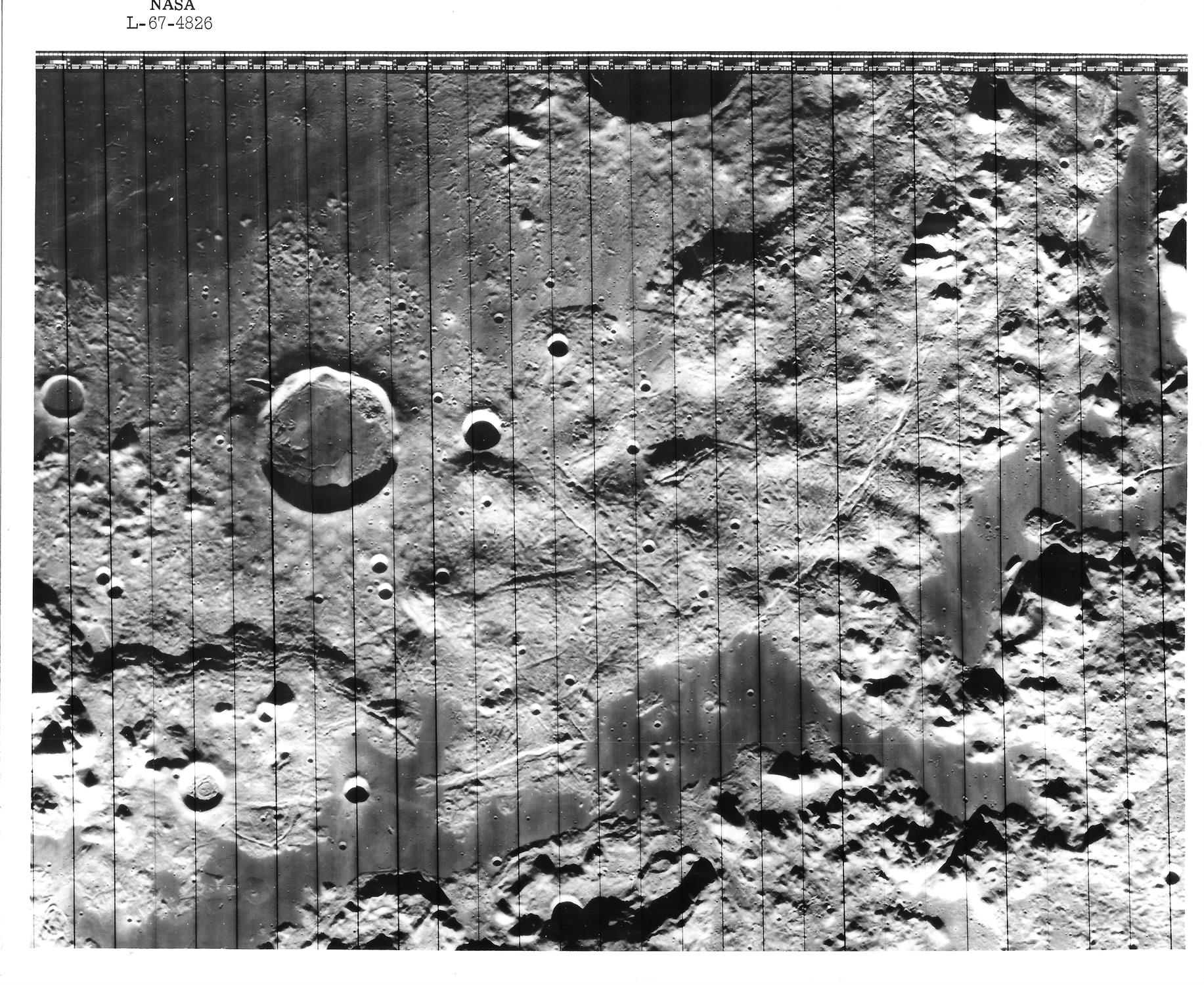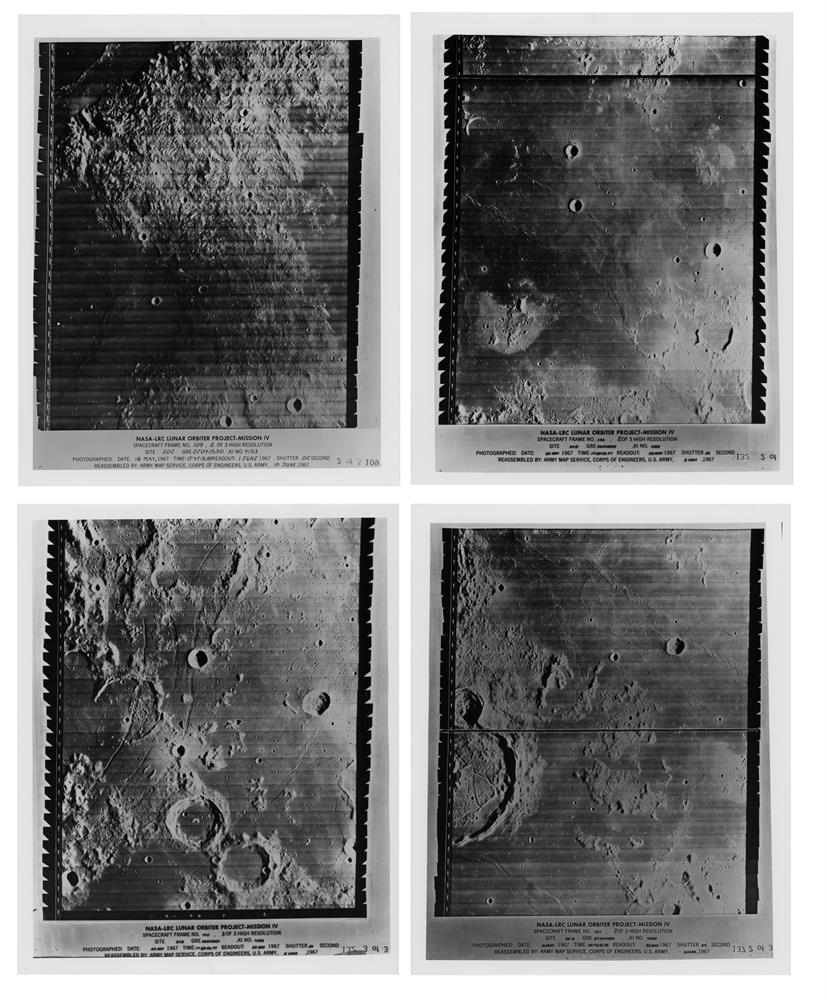View of the crater Aristarchus, and Schröter's Valley, May 22, 1967, 27 original positive film framelets, taped together and preserved between plexiglass in preparation for producing contact prints, 19½ x 17½ inches (495 x 445 mm) overall. DE FACTO AN ORIGINAL NEGATIVE FROM A LUNAR ORBITER, THOUGHT TO BE THE ONLY COMPLETE EXAMPLE TO SURVIVE. The Lunar Orbiter cameras were a technological feat that almost defies belief. Each Orbiter carried a Kodak camera equipped with two lenses, a lower resolution (or wide-angle) 80 mm lens, and a 610mm high-resolution (or telephoto) lens. Each exposure resulted in two simultaneous photographs, a wide-angle view, and a telephoto view. The exposures were made onto a roll of 70 mm film, which was moved during exposure to compensate for the spacecraft's velocity. The film was then processed on board the Orbiter, by a method Kodak invented called Bimat—somewhat akin to the Polaroid process. Next, the developed film passed through an analog scanner which transmitted the data back to Earth by radio (technology largely derived from television broadcasting and developed by the R&D wing of CBS). The data was gathered by three NASA Deep Space Network receiving stations: Goldstone, CA; South Africa, or later Madrid, Spain; and Woomera, Australia. The data was then sent on to the Army Map Service and NASA Langley. The video signal was converted into variations of light on a cathode ray tube, and the image produced was captured on positive film by a 35 mm camera. Each film positive is known as a framelet, and the Orbiter's original photograph is recreated by placing the framelets side by side. That film positive is considered zero-generation, and from it were produced negatives, from them contact prints, and so forth. The present assemblage is one of those zero-generation positives. It derives from the data stream received at Goldstone, and is believed to be the only surviving set of original assembled framelets from any of the five Lunar Orbiter missions.
View of the crater Aristarchus, and Schröter's Valley, May 22, 1967, 27 original positive film framelets, taped together and preserved between plexiglass in preparation for producing contact prints, 19½ x 17½ inches (495 x 445 mm) overall. DE FACTO AN ORIGINAL NEGATIVE FROM A LUNAR ORBITER, THOUGHT TO BE THE ONLY COMPLETE EXAMPLE TO SURVIVE. The Lunar Orbiter cameras were a technological feat that almost defies belief. Each Orbiter carried a Kodak camera equipped with two lenses, a lower resolution (or wide-angle) 80 mm lens, and a 610mm high-resolution (or telephoto) lens. Each exposure resulted in two simultaneous photographs, a wide-angle view, and a telephoto view. The exposures were made onto a roll of 70 mm film, which was moved during exposure to compensate for the spacecraft's velocity. The film was then processed on board the Orbiter, by a method Kodak invented called Bimat—somewhat akin to the Polaroid process. Next, the developed film passed through an analog scanner which transmitted the data back to Earth by radio (technology largely derived from television broadcasting and developed by the R&D wing of CBS). The data was gathered by three NASA Deep Space Network receiving stations: Goldstone, CA; South Africa, or later Madrid, Spain; and Woomera, Australia. The data was then sent on to the Army Map Service and NASA Langley. The video signal was converted into variations of light on a cathode ray tube, and the image produced was captured on positive film by a 35 mm camera. Each film positive is known as a framelet, and the Orbiter's original photograph is recreated by placing the framelets side by side. That film positive is considered zero-generation, and from it were produced negatives, from them contact prints, and so forth. The present assemblage is one of those zero-generation positives. It derives from the data stream received at Goldstone, and is believed to be the only surviving set of original assembled framelets from any of the five Lunar Orbiter missions.













.jpg)

Try LotSearch and its premium features for 7 days - without any costs!
Be notified automatically about new items in upcoming auctions.
Create an alert